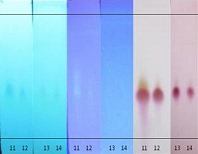Triterpene Compound from Ethyl Acetate Fraction of Kesambi Bark (Schleichera oleosa) and Its Activity as Anti-Bacterial
Abstract
In our earlier study, we managed to find the antibacterial activity of the ethyl acetate fraction of the kesambi bark stem. In our next study, we isolated secondary metabolite compounds from the ethyl acetate fraction of the kesambi stem bark and tested the antibacterial activity of isolates against the bacteria Escherichia coli and Staphylococcus aureus. Separation is carried out by the method of column chromatography. Analysis of stain patterns and purity was performed with thin-layer chromatography (TLC). The test of antibacterial activity was carried out by the Kirby Bauer method. Characterization of pure isolates was performed with IR, 1H -NMR, 13C -NMR and DEPT 135° spectroscopy. The results of the characterization of pure isolates show that the isolated compound is a triterpenoid compound with the name IUPAC compound lup-20(29)-en-3-ol. The results of antibacterial tests showed that the compound lup-20(29)-en-3-ol has antibacterial activity against E. coli and S. aureus which is relatively moderate.
Downloads

Copyright (c) 2024 Weny J.A. Musa, Kurnia Indah Setiyandani, Afif Hidayatul Mustafid, Nurhayati Bialangi, Boima Situmeang

This work is licensed under a Creative Commons Attribution-NonCommercial-NoDerivatives 4.0 International License.
Authors who publish with this journal agree to the following terms:
- Copyright on any article is retained by the author(s).
- The author grants the journal, the right of first publication with the work simultaneously licensed under a Creative Commons Attribution License that allows others to share the work with an acknowledgment of the work’s authorship and initial publication in this journal.
- Authors are able to enter into separate, additional contractual arrangements for the non-exclusive distribution of the journal’s published version of the work (e.g., post it to an institutional repository or publish it in a book), with an acknowledgment of its initial publication in this journal.
- Authors are permitted and encouraged to post their work online (e.g., in institutional repositories or on their website) prior to and during the submission process, as it can lead to productive exchanges, as well as earlier and greater citation of published work.
- The article and any associated published material is distributed under the Creative Commons Attribution-NonCommercial-NoDerivatives 4.0 International License.





_copy1.png)










